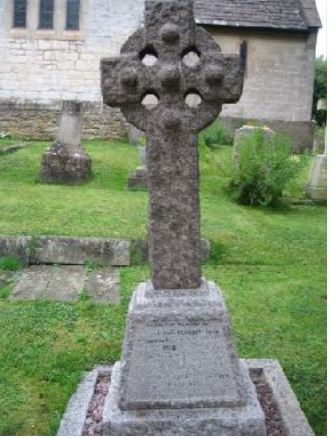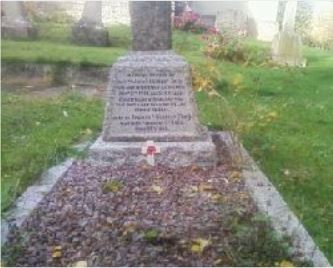168th Siege Battery, Royal Garrison Artillery

John Edward Herbert (known as Jack) was born at Whitcombe, Gloucestershire in early 1893 (he was baptised on 23 June). He was the second son of Thomas Hawkins Herbert (1864- ?) a farmer and his wife Mary Louisa (née Long: 1865-1943). According to the 1911 Census the couple had seven children, of whom five were living at that time (all boys).
The family appear to have moved from farm to farm over the years. In 1901 they were at Woodlands Farm, Great Whitcombe, in 1911 at Upper Pirton Farm, Chuchdown and at the time of Jack’s death at Robins Farm, Matson.
Unfortunately, there is no surviving Army Service or Pension Record for Jack. The former was no doubt one of those destroyed during the Blitz on London in 1940. As a result, it is not possible to determine when he joined the Army. He has a Medal Index Card, which shows an entitlement to the British War and Victory Medals but not the 1914-15 Star and this indicates that he probably joined in 1916 or early 1917. His occupation prior to joining is not known.
According to the Commonwealth War Graves Commission (CWGC) register he served as a Bombardier (number 167907) with 168th Siege Battery, Royal Garrison Artillery (RGA). This unit first went to the Western Front on 22 September 1916 and in 1917 was part of 88 Heavy Artillery Group and later 88 Brigade, RGA. The Siege Battery units were equipped with heavy howitzers, firing large calibre high explosive shells on a high trajectory with plunging fire. They were usually deployed on counter-battery work and to hit enemy strongpoints, dumps, railways and roads.
The War Office published a Weekly Casualty List and Jack’s name was reported as wounded in the list issued on 5 November 1918. It normally took a few weeks for a casualty’s name to appear in this official report and therefore it seems likely that Jack’s injuries occurred in either late September or early October 1918. His Service Record would reveal the exact dates but unfortunately this appears to be unavailable. His headstone and the Register of Soldiers’ Effects (located in the National Army Museum) record that Jack’s death occurred at Cleve Hill Voluntary Aid Detachment Hospital, Downend, Bristol, on 10 November 1918, age 24. A notice of death was placed in the Gloucester Journal of 16 November and this stated that he died from the effects of gas.
Jack was buried in the churchyard of Matson (St Katherine) on 15 November 1918. A private headstone – a tall stone cross on a plinth – marks his grave and also names his brother Thomas F Herbert, who died in 1922 and is probably buried with him. He may well have served in the Glosters.

Researched by Graham Adams 28 March 2020
